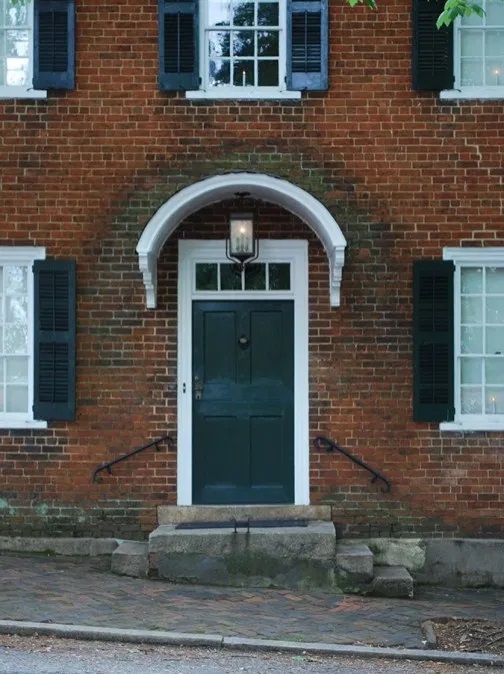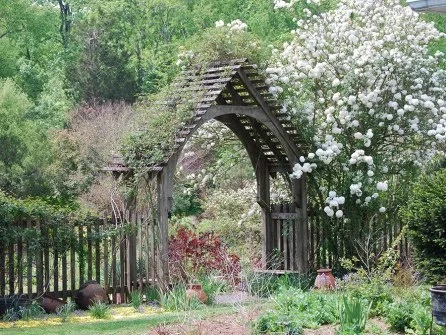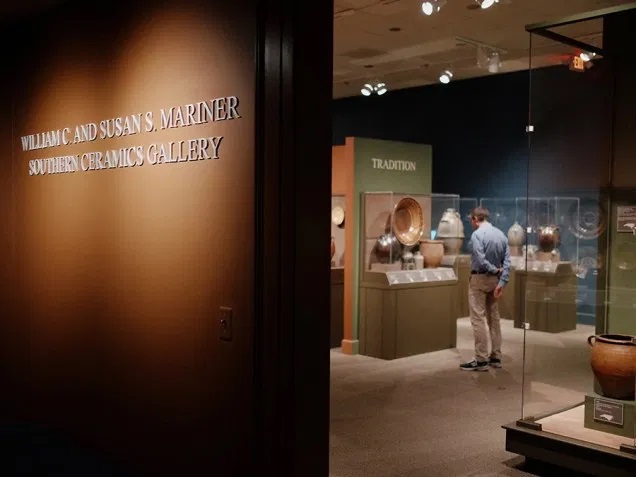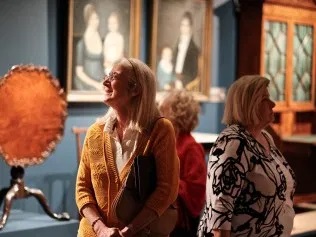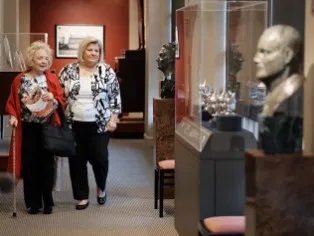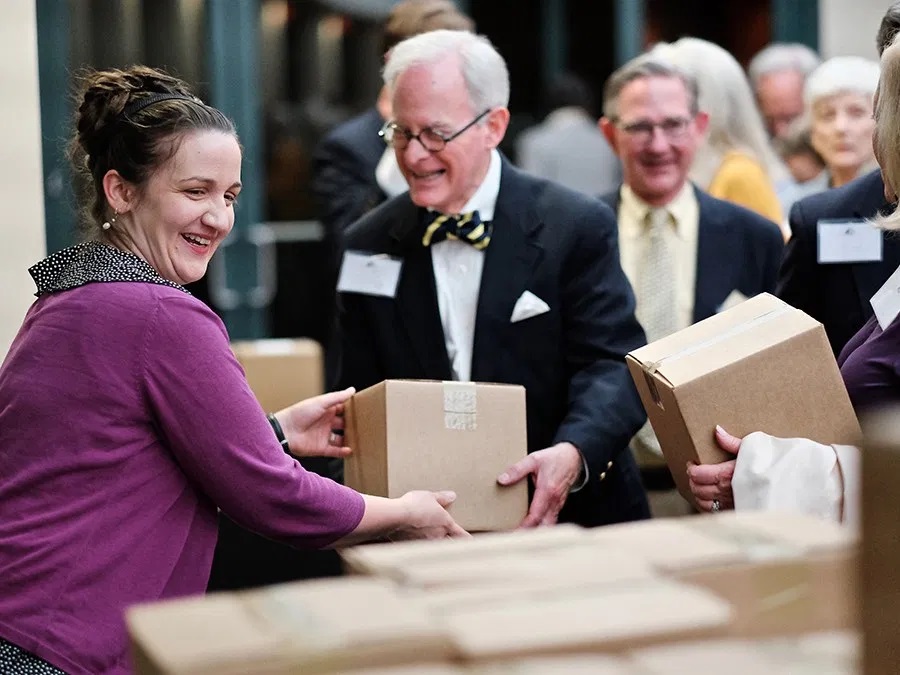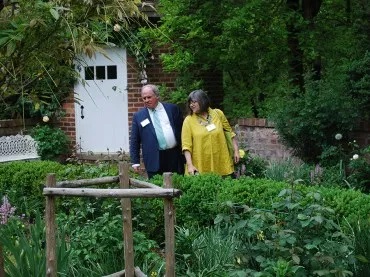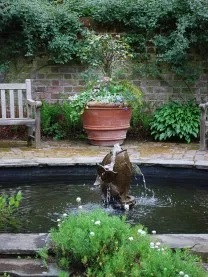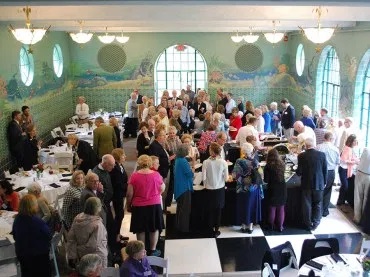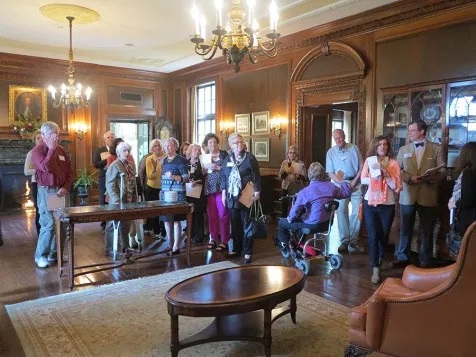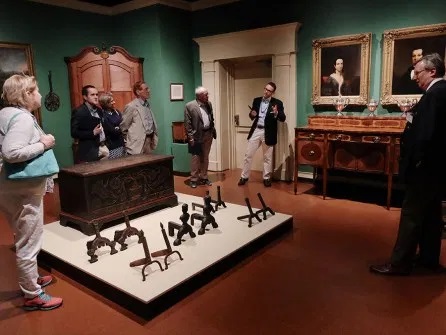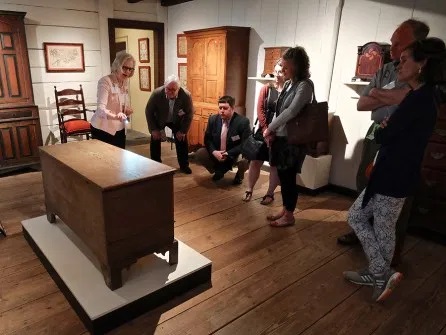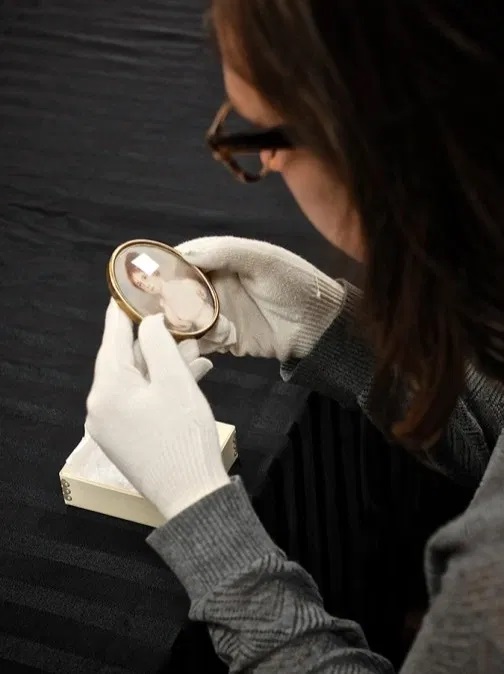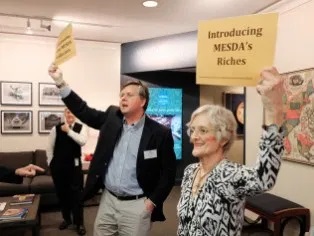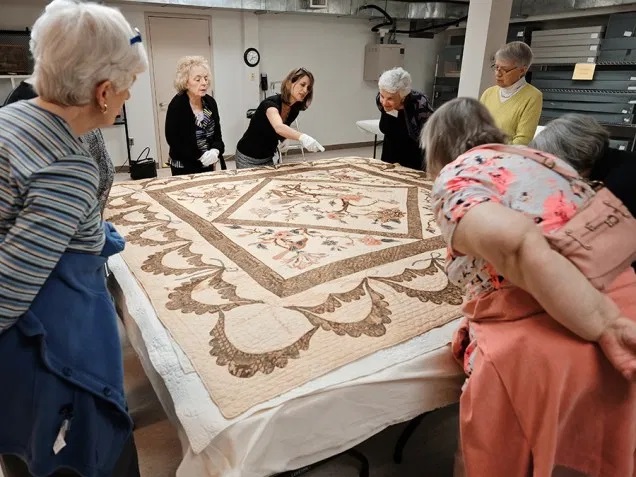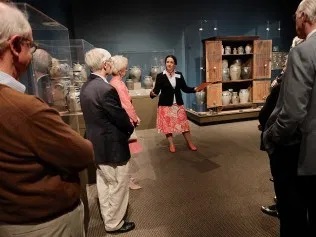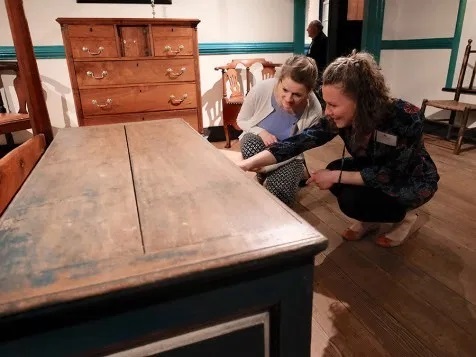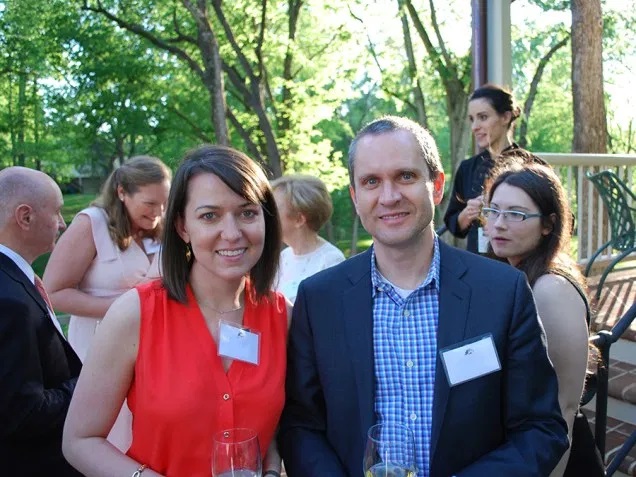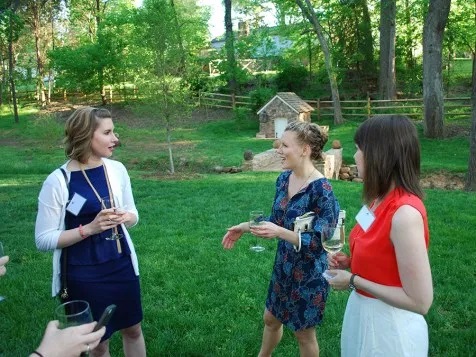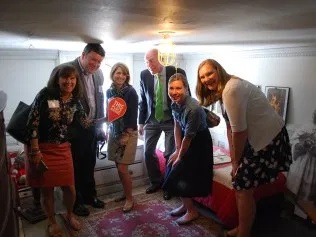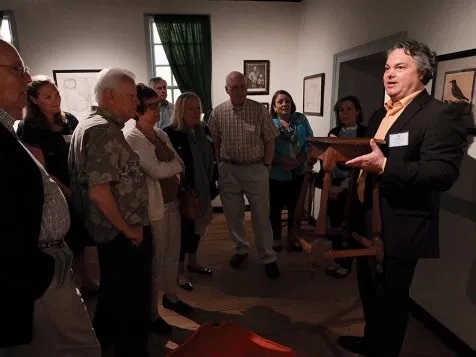Experiencing Winston-Salem and the North Carolina Piedmont
Winston-Salem and the surrounding Piedmont hold many attractions for lovers of the decorative arts: stellar collections at regional museums, the annual High Point Furniture Market, and a wealth of history dating back to before the American Revolution. For many Trust members, this symposium was a chance to revisit favorite institutions, such as the Museum of Early Southern Decorative Arts or the Reynolda House Museum of American Art. For others, it was their introduction both these museums and to the region. For Matt and Christian, it felt a bit like coming home, thanks to the many dear friends who work in the area. The beautiful spring foliage, wonderful barbecue, and generous helpings of the area’s fabled Southern hospitality added up to a wonderful experience.
The symposium kicked off with an opening reception in MESDA’s museum center. In addition to catching up with old friends and making new ones, members had a chance to walk through the museum’s newest galleries, both, named for MESDA benefactors who are also Trust members: the Carolyn and Mike McNamara Southern Masterworks Gallery, and the William C. and Susan S. Mariner Southern Ceramics Gallery. These self-guided galleries are one new aspect of MESDA’s evolving interpretation and education strategy, which was one of many accomplishments outlined by Old Salem Vice President of Collections and Research, and Trust Governor, Robert Leath during his opening lecture, 50 Years of MESDA. A further surprise awaited participants after the lecture: as a special thank you gift, Matt had commissioned a run of commemorative mugs from Brenda Hornsby Heindl, head of the ceramics department at Jeffrey S. Evans & Associates, and who also runs Liberty Stoneware (link), a pottery studio specializing in historically-inspired designs.
Friday brought the focus of the Trust to the 20th century, an era of incredible industrial growth and prosperity in Winston-Salem. Our base of operations was the Reynolda House Museum of American Art, a stellar institution operating out of the former home of tobacco magnate R.J. Reynolds and his wife Katherine. As pointed out by architectural historian Peggy Smith in the day’s opening lecture, Reynolda was the first of many grand country and suburban houses built in the Winston-Salem area for wealthy residents. The Reynolds were the first to employ Philadelphia-based architect Charles Barton Keene, who became the fashionable choice for those building new homes in Winston-Salem and Greensboro. R.J. and Katherine’s granddaughter, Barbara Babcock Millhouse, who grew up in the house, spoke of the recent restoration of the interiors to their 1917 appearance, a lengthy process of discovery, as the early decades of twentieth century design and interior decoration have not received much scholarly attention. As with many museums, the growth and development of the collection is a history in its own right, and curator Allison Slaby’s lecture on envisioning the house as a premier museum of American Art spoke as much about the developing appreciation for that field as it did the history of the collection.
A particular treat of Trust symposia is the ability to visit the sites described in the lectures, and Friday’s afternoon visits did not disappoint. A quartet of houses from the first half of the twentieth century, including Reynolda, graciously welcomed members over the course of the afternoon. Graylyn, built by R.J. Reynolds Tobacco Company president Bowman Gray, Sr., is now a conference center operated by the nearby Wake Forest University. The Trust was hosted for lunch in the Atlantis Room—the center’s (covered) indoor pool, featuring bright ceramic tiles and a decorated with exuberant undersea murals. Lyons Gray, grandson of Bowman Gray, and his wife Connie gave remarks during lunch on the history of the house and their family. Like many large houses, the four seen by the Trust have changed with the times, and been adapted for different uses. Of the four, the Ralph and Dewitt Hanes house still serves as a home, albeit an official one. Since the 1980s, it served as the President’s House for Wake Forest University. The garden, by designed by Ellen Biddle Shipman, was in full bloom and a great favorite with the participants. Across a small lake is the house built by Ralph’s brother James, and which today serves as the entryway for the galleries of the Southeastern Center for Contemporary Art.
The gardens of the Ralph and Dewitt Hanes House have been recently restored to their original planting scheme.
Trust members listen to commentary provided by Lyons Gray, grandson of the house’s builder Bowman Gray, Sr., and his wife Connie.
Saturday once again brought us back to the bosom of MESDA and Old Salem. The morning’s lectures hit the major highlights of the institution, from an introduction to the Moravian aesthetic by Johanna Brown, to overviews of Piedmont furniture, southern metalwork, and southern ceramics by June Lucas, Gary Albert, and Rob Hunter, respectively. That afternoon, MESDA staff truly rolled out the red carpet for the Trust with a series of in-depth, behind the scenes tours. Organizing a group of more than 100 into three separate sessions of small groups did cause Christian some minor heartburn, but he decided it was worth it after tagging along on the tours. The small group size, the expertise of the leaders, and the “behind the scenes” information made these definitely more special than the average gallery walk.
Daniel Ackermann led tours focusing on objects from the Inland South, a region only just beginning to be studied.
The full-access tours of MESDA were a particular highlight of the symposium. Here June Lucas discusses North Carolina furniture.
The tour leaders, all MESDA staff or symposium lecturers, are some of the leading experts in their fields.
All good things must come to an end, but what better way to end a Trust symposium than a fantastic showing by emerging scholars? Sunday’s lectures were dedicated to MESDA’s Summer Institute, spearheaded for thirty years by Sally Gant. In addition to the fieldwork undertaken for the MESDA research center, the Summer Institute has served as an important training ground for generations of curators and museum professionals. We had the opportunity to hear from three summer institute alumnae: Amber Clawson of Historical Association of Catawba County, Brenda Hornsby Hiendl, and April Strader-Bullin, now working at MESDA. In addition to uncovering new information about the material life and history in the American South, each of these projects helped set them on their professional trajectory. Daniel Ackermann, MESDA’s associate curator, closed the festivities with a preview of what the institution hopes to do with its next fifty years.
To say a good time was had by all would be a massive understatement. It was a pleasure for Matt and Christian to bring so many people to such an array of wonderful institutions in the heart of North Carolina. We hope to see just as many enthusiastic participants at our future symposia in Winchester, Savannah, and Hartford, as well as study trips to Yorkshire, Scotland, and Venice!
About The Decorative Arts Trust Bulletin
Formerly known as the "blog,” the Bulletin features new research and scholarship, travelogues, book reviews, and museum and gallery exhibitions. The Bulletin complements The Magazine of the Decorative Arts Trust, our biannual members publication.








